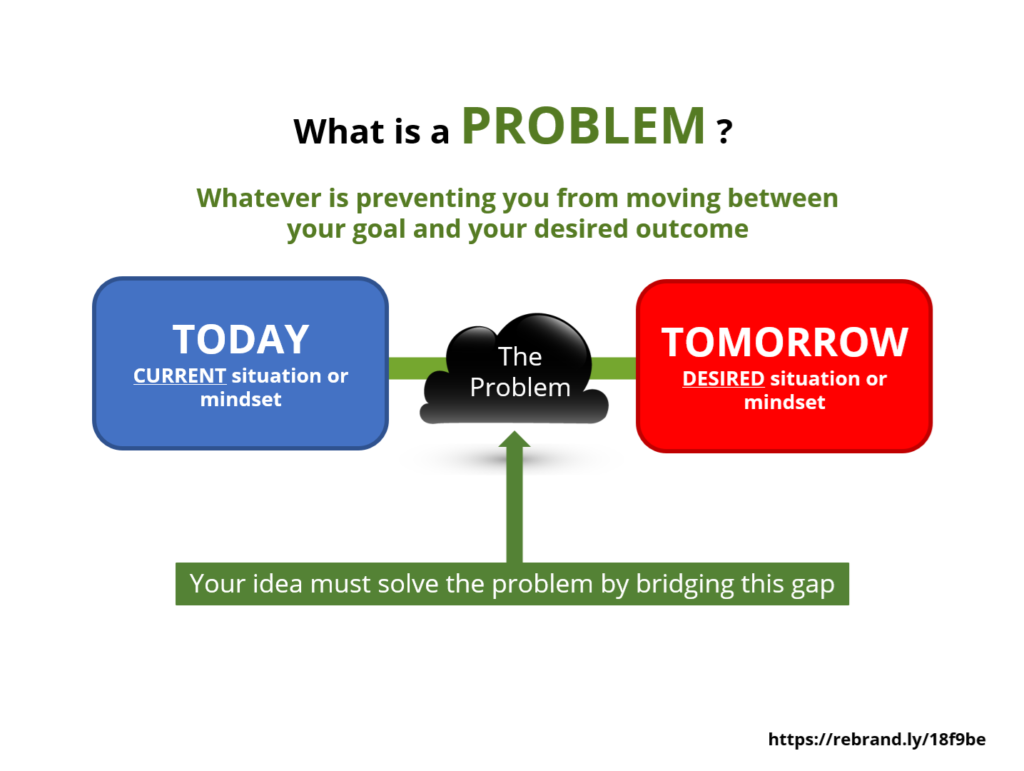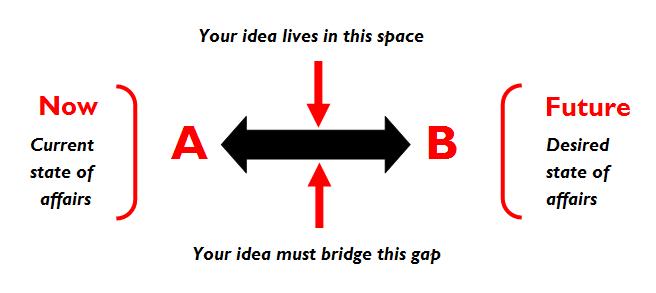Every class I teach, whether it’s about any topic of business or generally about creativity, comes down to one word: the problem.
In short, understand the problem. Next, create an idea to get rid of the problem. That’s it.
Ironically, the problem for many people is the word problem. Or more likely, defining the problem may be the problem.
So Many Definitions of a Problem
Here is one of the most common definitions: a complaint, misgiving or objection.
A very simple definition: a condition that’s not acceptable.
Or, here’s one specific to problem solving: a situation, matter or person that presents perplexity or difficulty.
And a fourth, aligned with creative problem-solving: a question to be considered, solved or answered.
The Definition Capturing the Key Point
In The Concept of a Problem, Gene Agre defines a ‘problem’ exactly:
The gap between the current state of affairs and the desired state of affairs.
In other words, the problem defines what is standing in the way between where we are now and where we want to be. Simple.
The side picture visualises Agre’s definition.
A is now, or the current mindset or state of affairs. In other words, either …
- The situation around you is the problem, or
- You are the problem.
B is the future, or the desired mindset or state of affairs. The gap between them is where the idea lives, and what the idea must bridge. If the idea doesn’t bridge this gap, it won’t solve the problem.
One last point: the Point A to Point B analogy can describe both the external and internal situation.
Problems are not Always Devastating
Problems come in many shapes and forms, from simple to catastrophic.
If launching a new product, the problem may be nothing more than the target audience has never heard of it or the company.
On the other end of the spectrum, the problem might be anger or hatred if the target audience believes an organisation caused a major injustice, committed a crime, been immoral, or feels betrayed.
Arguably the most difficult problem to solve is apathy: the audience simply doesn’t care.
The problem doesn’t need to a problem per se. A problem may also be a wish or a desire. For example, parents may wish to save time cooking so they can spend more time with the children. An executive may wish for one gadget to simplify their diary.
Two Point to Close
You must know precisely what the problem is to solve it.
Don’t solve the wrong problem.
Side Note: Something that comes up here is the issue of framing (or re-framing) the problem. Go here to start a series of articles on reframing.
Your thoughts on problem solving – specifically, how do you try to understand the problem? Please add your thoughts and comments below.



No comment yet, add your voice below!